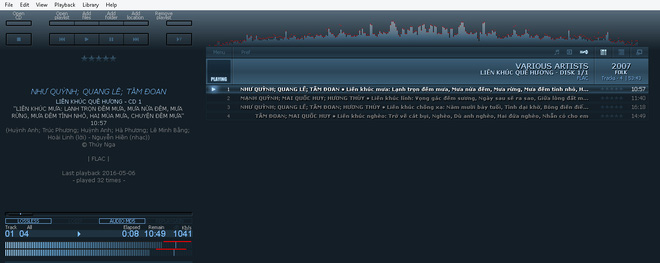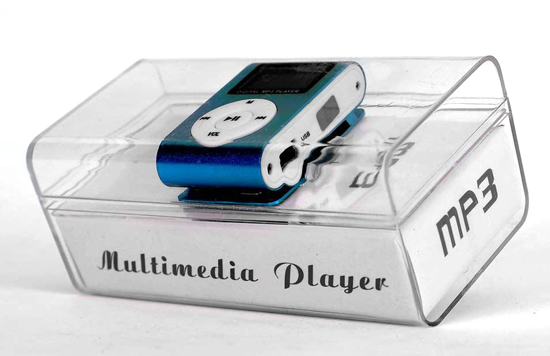WAV, FLAC and MP3 are all music playing?
Audio formats like MP3, WAV, FLAC become too familiar to everyone. But few people know what the difference between these types of audio files is. Each audio format has its own characteristics. They all use different algorithms and create their own distinctive sound identity.
Therefore, this greatly affects the quality of each sound. If you know what characteristics each sound type has, it will be easier to choose the audio to listen to or use for storage. Together with the Network Administrator, learn the differences between the three types of WAV, FLAC and MP3 audio.
1. PCM code modulation (Pulse Code Modulation):
Why do we introduce you the concept of PCM first without going right into the 3 types of audio formats above?
In order to better understand the sound types, you should first learn about the basic elements of audio format called PCM. Launched in 1937, PCM is considered the father of analog sound types, and is the first technology to support from analog to digital digital. We can listen to music on the computer, the CD player is thanks to this "divine" technology.
PCM is made up of two specific components:
Sample rate : indicates the number of times the vibration amplitude per second of sound waves.
Bit depth : Bit is simply a binary code (0 and 1) used to create data, or music files that we download. Bit depth will indicate the number of bits used to store the audio signal.

If the bit is related to the level, the sample rate is related to the time. In other words, the sample rate indicates the number of times the audio signal is measured and sampled in a second.
To make it easier to understand, we will take a practical example:
- When the audio signal is stored in 16-bit depth with a sampling frequency of 44.1 kHz, every second received signal is cut to 44,100 slices and each slice has 65,536 levels.
- When the audio signal is saved in 24-bit depth with a sampling frequency of 96 kHz, each second of the received signal is cut to 96,000 slices and each slice has 16,777,216 levels.
2. How to distinguish between audio formats:
Three popular audio archives include: uncompressed (uncompressed), compressed but preserved (lossless), and compressed without preserving content (lossy).
1. Uncompressed (uncompressed): WAV, AIFF
This type of audio format is original, uncompressed and has quite a large capacity like WAV, AIFF. According to this format, every second, the sound will be sampled with a frequency of 44.1 KHz (44100 times / second), each of which is described by 16 bits of data. So with 1 minute of sound, we have:
44100 Hz x 2 left channels x 2 bytes (16 bits = 2 bytes) x 60 seconds = 10,584,000 bytes = 10.1 MB.

WAV audio file has a standard bit-rate of 1411 kpbs
1 CD of 750 MB will store about 74 minutes of music, corresponding to the standard bit rate of the original audio is 44100 Hz X 2 channels x 16bit = 1411 kbps (Kilobits / second). This WAV format is usually recorded as audio (songs, speeches .) in raw form and then processed by studio equipment or specialized software to export files of lesser capacity.
2. Compress but preserve content (lossless):
Lossless formats: FLAC, ALAC, APE.
FLAC (Lossless Audio Codec):
Designed to store sounds like WAV but compressed with different algorithms. A FLAC format file with the same sampling frequency will be only half the size of the WAV file (about 5MB for a minute of audio). The compression algorithm in FLAC does not dismiss any audio signal and you can completely extract from a FLAC file into a WAV file.

FLAC audio format is compressed to 1041kbps
APE: Monkey's audio:
This is also a popular lossless format, though not popular on mp3 players with Flac because an audio decoding chip is obvious, and decoding Flac is no more complicated than mp3. So manufacturers use Flac on sound chips. APE is more difficult, currently cowon and sansa machines support APE.
ALAC is also called M4A (Apple lossless audio code):
This format was founded by Apple, exclusively for iOS and non-popular devices like Flac or APE.
What is FLAC different from APE?
Like Zip comparison with Rar in that are lossless but different algorithms, created by 2 different companies. The complexity of Ape is more than Flac. Currently, maximum compression of Flac is about 1/2 original wave file. But again it is the same quality and the original file.
3. Compression does not preserve content (lossy):
Lossy formats: MP3, AAC, WMA, Vorbis.
MP3 (MPEG 1 Audio Layer 3):
The most popular "easy data loss" audio format today. MP3 music is usually compressed with bit-rate of 128kbps to 320kbps, which is one-tenth of the WAV bit-rate (1411kbps). Each 128kbps mp3 takes about 1MB and a CD can store up to hundreds of songs.

Vorbis:
Type "easy to lose data" format for free with open source. Commonly used for PC games like Unreal Tournament 3.
AAC (Advanced Audio Coding):
The current standard format is used for MPEG 4 video. It is compatible with Digital rights management (DRM), such as Apple's Fairplay software. The superiority to the MP3 format, and in particular can share content in this format without any procedure.
WMA (Windows Media Audio):
Microsoft "easy data loss" audio format. This format was first developed and used to avoid license issues for products that use MP3 format. However, thanks to continuous improvements and compatibility with digital rights management (DRM) censorship systems, WMA is still very popular until iTunes becomes the champion in the DRM music world.
Each type of music has its own advantages. And if you want to choose what kind of music to listen to, or store it based on 3 factors:
- How would you like to hear the sound?
- How do you require sound quality?
- Your audio playback device (speaker, headphone .) can meet.
Refer to the following articles:
- 4 steps to troubleshoot audio loss in Windows
- Trick to turn on individual tab off sounds on Chrome
- How to troubleshoot audio loss problems on Windows 10
Hope the above article is useful to you!
 Windows 10 error causes some FLAC encoded music files to become corrupted
Windows 10 error causes some FLAC encoded music files to become corrupted What file is FLAC? How to open, edit and convert FLAC files
What file is FLAC? How to open, edit and convert FLAC files How to Play FLAC Files
How to Play FLAC Files Top 3 Lossless FLac music player software 2020
Top 3 Lossless FLac music player software 2020 How to convert FLAC file to ALAC
How to convert FLAC file to ALAC